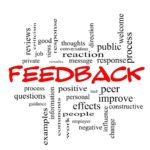How To Use Journal Citation Reports (JCR)
Journal Citation Reports is published annually and provides an enormous amount of citation data meticulously gathered from thousands of science and social sciences journals to arrive at accurate and meaningful measures of each journal’s influence and rank in its respective discipline. For those who know how to use Journal Citation Reports (JCR) effectively, specific and comparative information on the citations a journal receives, its citable items, its Journal Impact Factor (JIF), its 5 Year Impact Factor, its Immediacy Index, its Eigenfactor Score and much more is readily available.
Although the JCR website is not open access, most universities and other research institutions are subscribers, providing students and faculty with free access to its many resources. There are a wide variety of search options available on the JCR site – so many in fact that it is impossible to describe all of them in a brief post. I therefore focus here on using the JCR journal profile pages to start evaluating individual journals and comparing them to other journals in their assigned subject categories.
How To Use Journal Citation Reports via the Journal Profile Pages
An excellent way to begin learning how to use JCR is to choose the Browse by Journal option from the JCR landing page to search for a specific journal using its full title. As the title is typed into the Go to Journal Profile search box at the top left of the Browse by Journal home page, a list of suggested journal titles from both the Science and Social Sciences editions of the JCR appears. Selecting the correct title will take you directly to that journal’s profile page, where a range of information about the journal and its citation metrics is displayed.
The top section of the page contains the full title of the journal and information on the location, publisher, publication frequency, language, contents, abbreviations, title changes and subject categories associated with the journal. Clicking on one of the categories will take you to a list of all the titles in that category arranged according to their impact factors, and you can then select specific journals for comparison and add journals to customised lists of your own. If the journal is open access, an unlocked icon is displayed, and if the journal has been suppressed in any year, a note of that will also appear in this top section of the profile.
Beneath this introductory information, detailed data on the journal’s JIF for the current (most recent) year is displayed. This metric is based on all citations made during the year to the items published in the journal in the previous two years. The exact calculation for the JIF is provided along with a JIF trend graph, a citation distribution graph, and a list of the items that contributed to the year’s JIF. A box containing key indicators for the year is also displayed on the journal’s profile page. It provides the total number of citations that the journal received in the year, its JIF for that year and its impact factor when self-citations are removed from the calculation. A 5 Year JIF is also provided, as is an Immediacy Index for citations made in the year of publication. The total number of citable items is recorded, metrics for cited and citing half-life are included, and both an Eigenfactor Score that reflects the structure of the citation network and an Article Influence Score that measures the importance of the journal at the article level are offered.
Metrics for all the years a journal has been included in JCR can be accessed by choosing All Years instead of Current Year above the JIF trend graph or clicking the highlighted word ‘here’ at the top of the Journal Source Data box beneath the Key Indicators table. This brings up a Key Indicators table for all the years a journal has been included in JCR, allowing evaluation and comparison over a longer period of time. The word ‘Graph’ beneath each column in the table opens a visualisation for each indicator, clicking on a particular year links the user to that year’s data, and clicking on a specific value displays the data and calculations used to produce that metric. Beneath this Key Indicators table for all years is a menu with further useful options, so choosing the Rank button, for instance, will enable viewing the journal and its metrics comparatively in relation to the other journals included in its subject categories. By exploring in this way the many possibilities presented by the JCR journal profile pages, even the academic or scientist new to citation metrics can soon learn how to use Journal Citation Reports as an efficient and informative tool for enhancing research projects and publishing plans.
You might be interested in Services offered by Proof-Reading-Service.com
Journal Editing
Journal article editing services
PhD Thesis Editing
PhD thesis editing services
Expert Editing
Expert editing for all papers
Medical Editing
Medical Editing Services
Research Editing
Research paper editing services
Book Editing
Professional book editing services

















